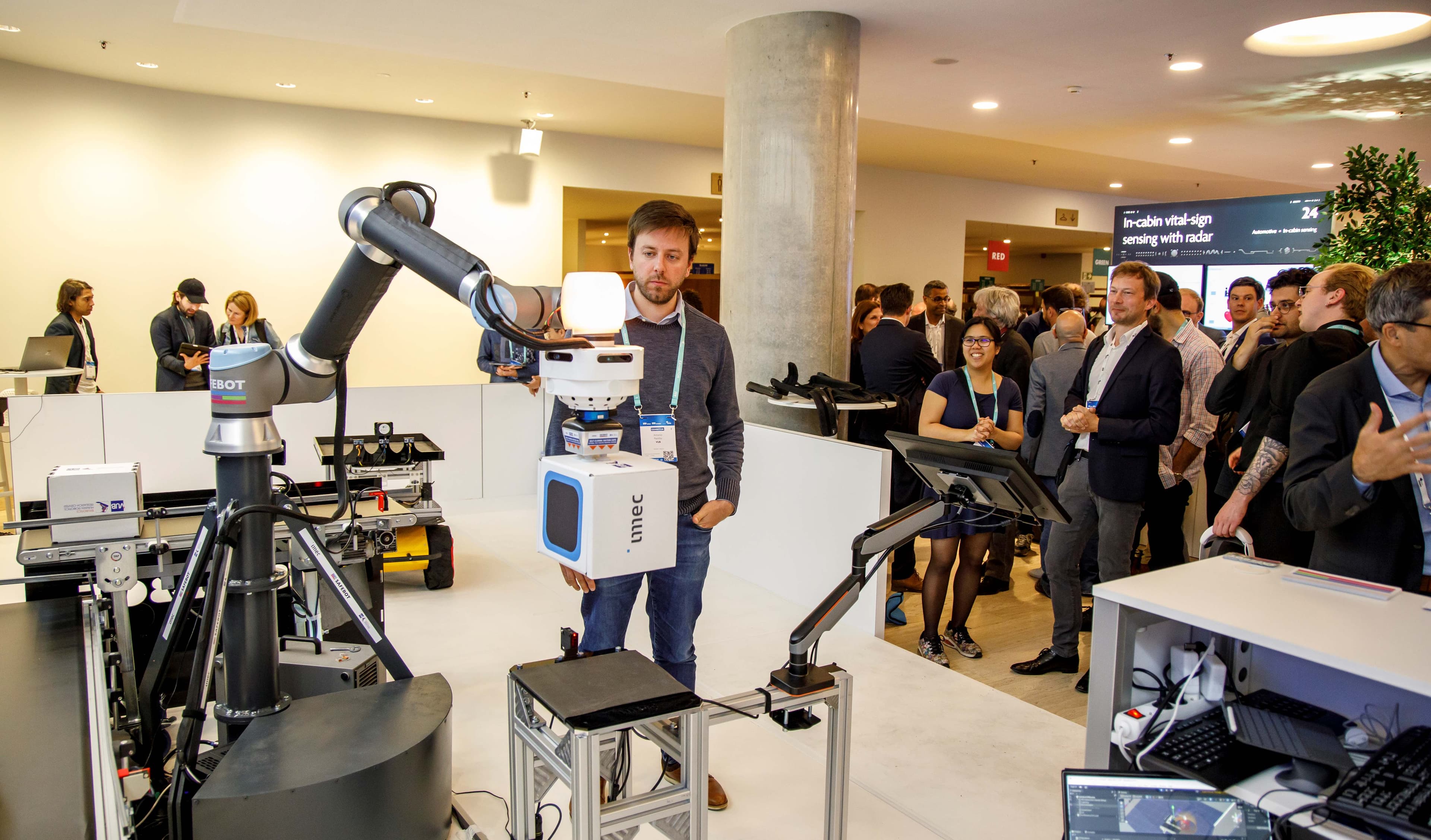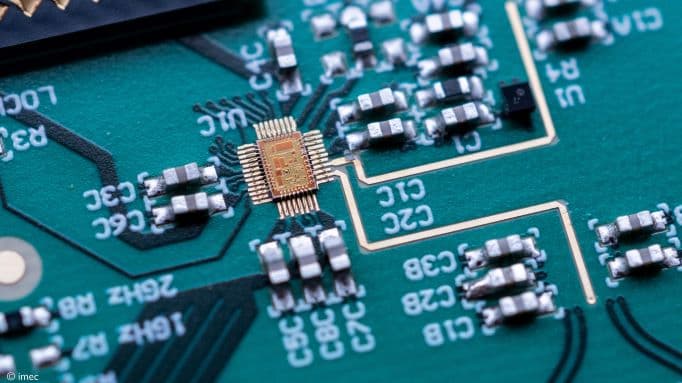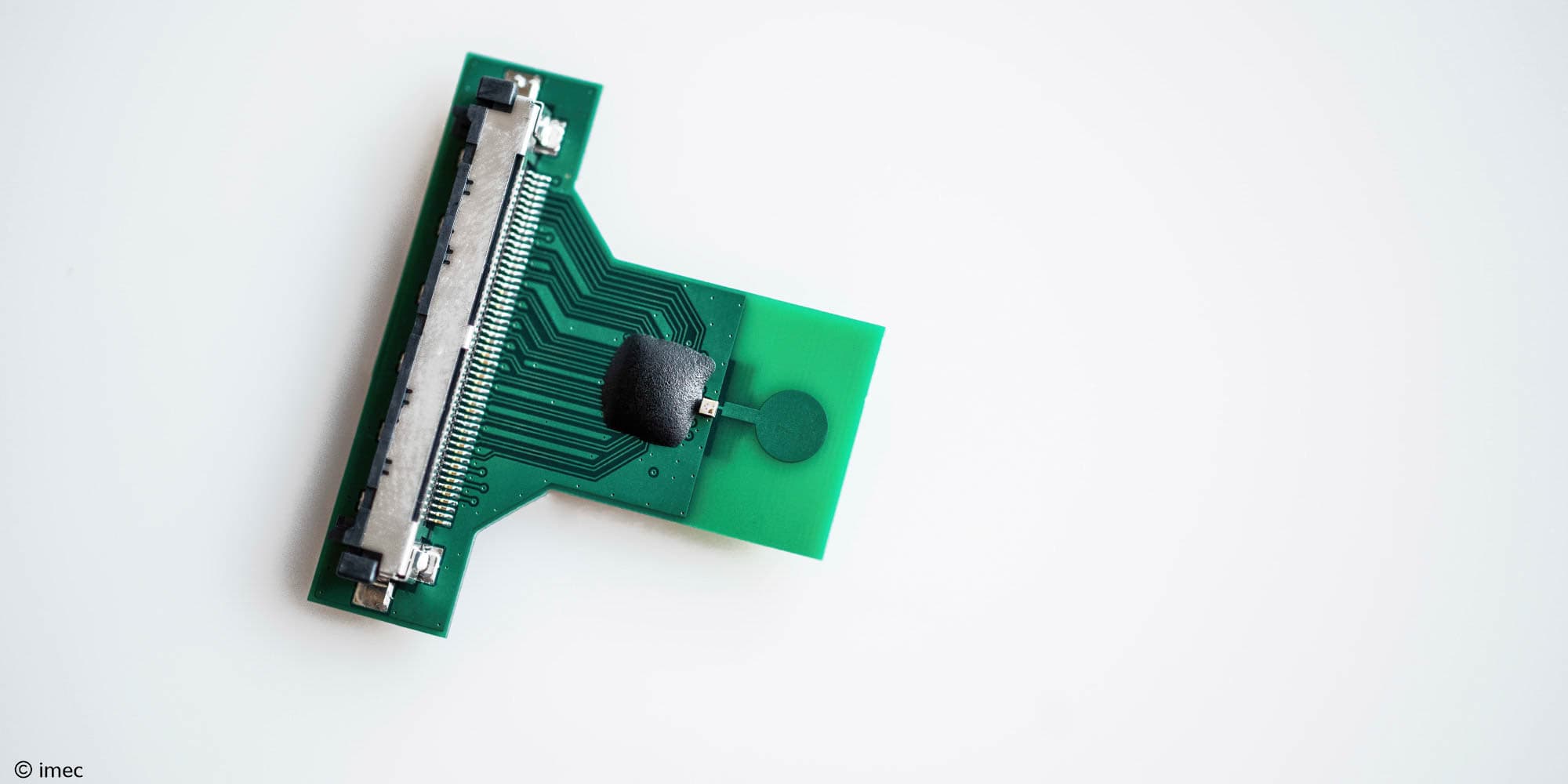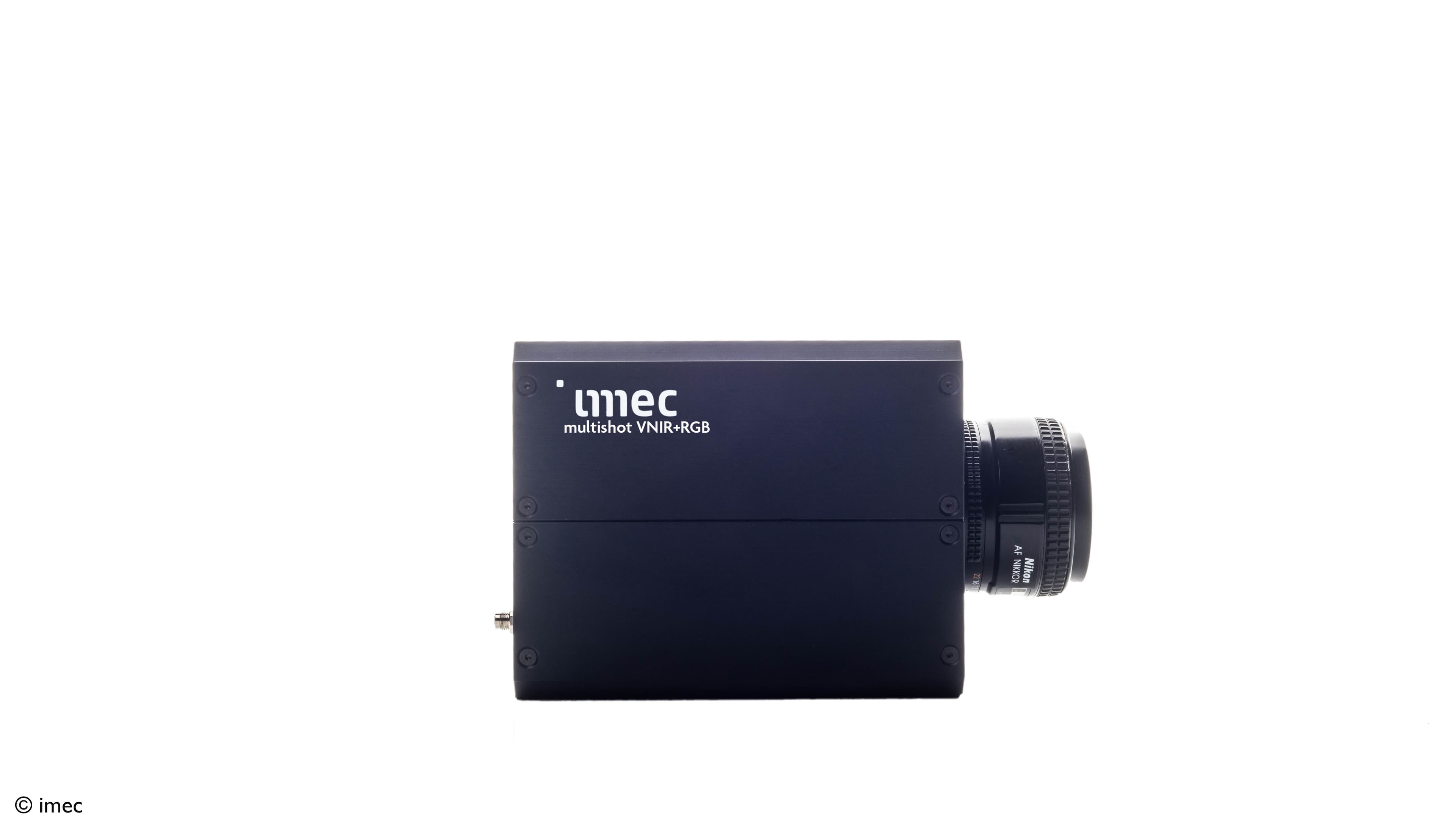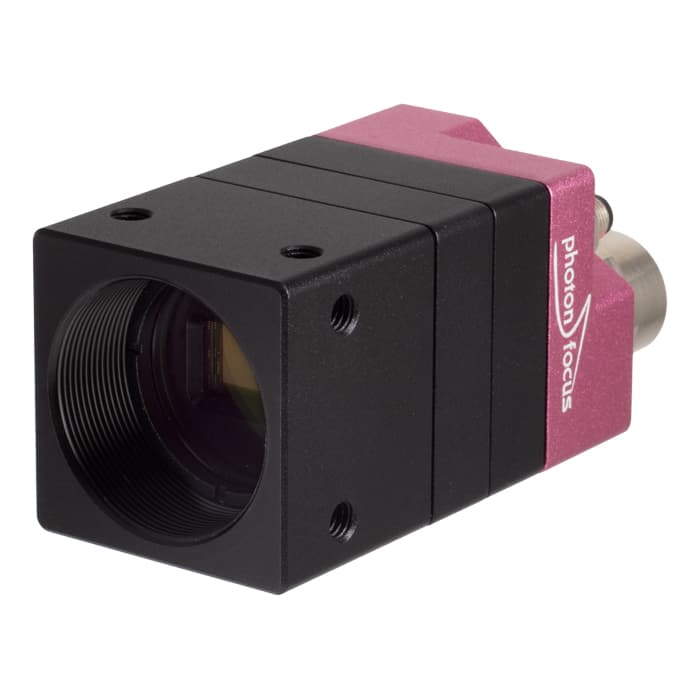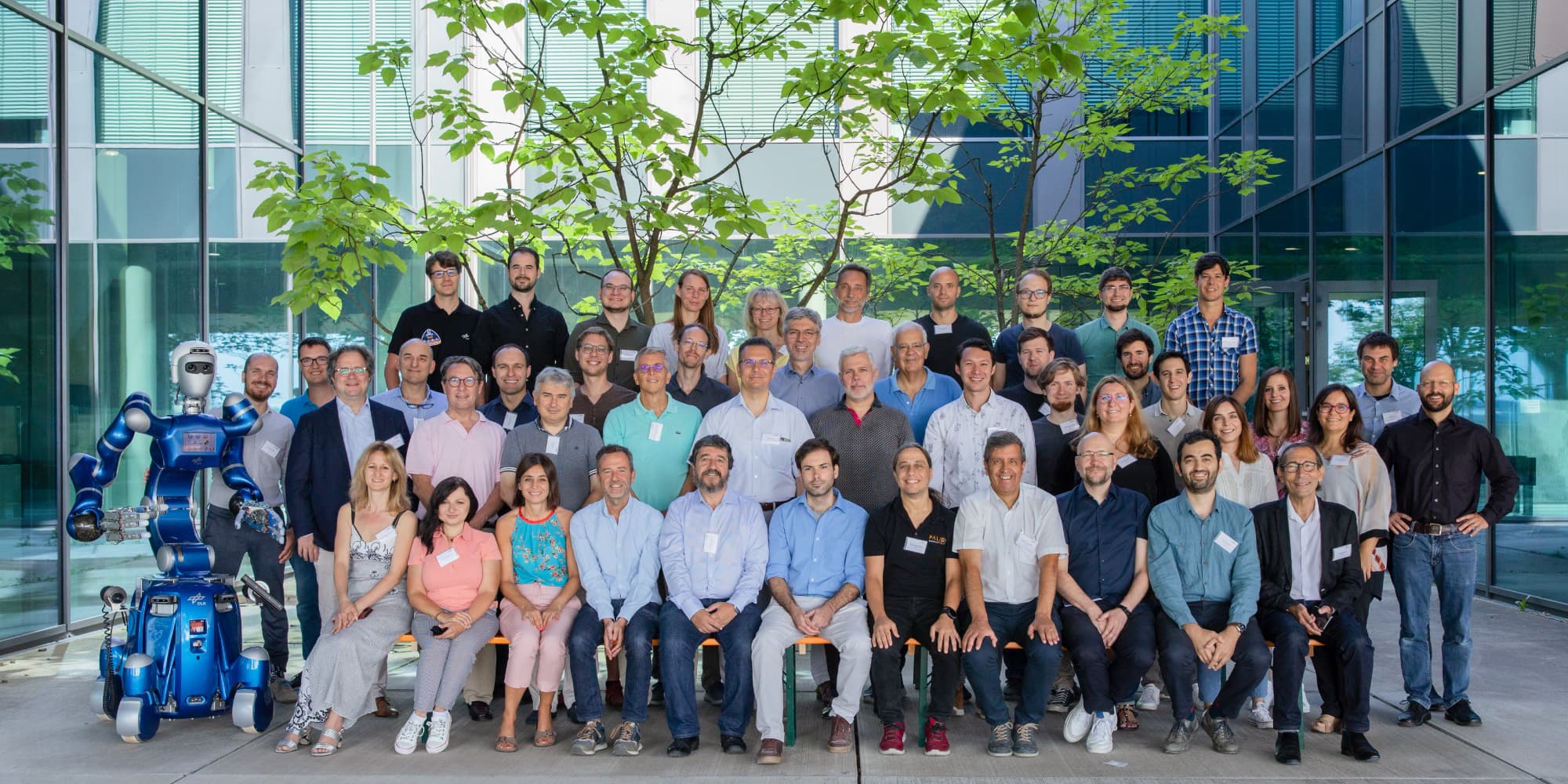
Advanced robotics technology for Industry 4.0
Design and fabricate electronic components, sensors, and imagers that will enable systems that change how we make things.
The manufacturing industry is on a fast track to more autonomous and smart production, aka Industry 4.0 – in large part driven by advanced robotics.
Imec’s mission is to look ahead and make the as-yet-impossible possible. We’re developing a range of extremely sensitive technologies that are miniaturized, low-power, mass-manufacturable and affordable. Disruptive technologies to propel the industry ahead.
And thanks to flexible yet mature processes, imec can integrate these different technologies into sensor prototypes that standard fabs would be hard-pressed to make.
What sets imec apart is that we are the only place with advanced 200mm and 300mm CMOS pilot lines (also equipped for MEMS fabrication and 3D integration) that combine the process capabilities and quality of a foundry with the flexibility of a lab. A facility where we can produce small volumes of custom-made chips, reliably and on time.
So if you have an idea or design that no one seems to be able to turn into a manufacturable prototype, you should talk to us.
Special imagers for dedicated, affordable, high-resolution industrial sensing
Imec tunes CMOS imager technology and designs to realize your imager, exactly made to fit the specifications and needs of your application. We start from your idea. Then we design, develop, and eventually also fabricate the imager.
Our infrared imager technology is a telltale example: a thin-film design monolithically integrated on 200mm wafer readouts, it brings a new level of resolution, flexibility and affordability to infrared vision.
Hyperspectral cameras – super eyes for advanced robotics
Imec’s revolutionary hyperspectral chips, ultracompact cameras, and software open up hyperspectral imaging for continuous, cost-effective use in all types of production and inspection tools.
Our eyes and digital cameras see the world in three colors. Hyperspectral cameras may distinguish tens to hundreds of separate colors, and with that they may detect the visual fingerprint of individual materials, or even the state of a material. Therefore, hyperspectral cameras may revolutionize predictive maintenance, for instance by detecting corrosion before the human eye can see it.
Read how Tridimeo combines 3D and multispectral imaging to equip manufacturing robots with a robust and reliable set of eyes.
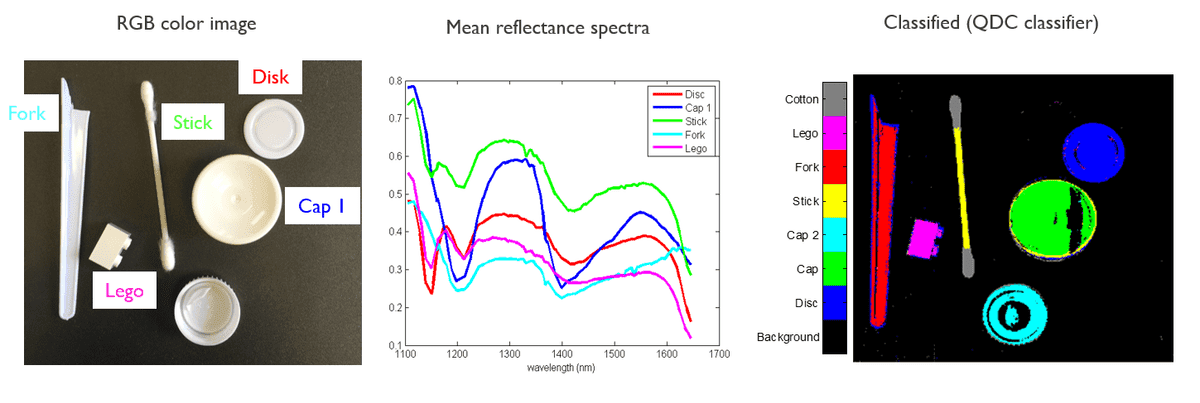
Hyperspectral imaging in the SWIR range enables robust classification of various white plastic types including PET, PVC, PE, PMMA, PS and PP.
BLE and UWB for high-precision localization and asset tracking
In autonomous fabrication processes, controllers should adapt organically to dynamic changes in the system and its environment. Challenges for such controllers are asset tracking and identifying and picking unsorted items.
These call for advanced localization sensors, multimodal sensing, and the fusion of sensor data coupled to machine learning and artificial intelligence.
- next-generation Bluetooth Low Energy and UWB technology for micro-location and tracking
- imagers and cameras for multimodal imaging (multi/hyperspectral, near-infrared, visible)
- sensor fusion for identification and position tracking
- low-power machine learning and AI, improved tracking and detection with smaller computational footprint
Radar, lidar and sensor fusion – autonomous, mobile robotic manufacturing
Future manufacturing calls for autonomous, flexible, and mobile platforms for assembly and repair tasks. These should find their way in a continuously changing environment. They should not block or misbehave because of unexpected events or anomalies. And they should of course be perfectly safe for any humans to be around. This calls for a high degree of situational awareness under all circumstances.
2025 article: Agentic and physical AI will change everything
- 140Ghz radar for robotics and human-machine interaction
- optical beamforming platform for lidar for situational awareness
- active and passive proximity detection
- sensor fusion for maximal situational mapping
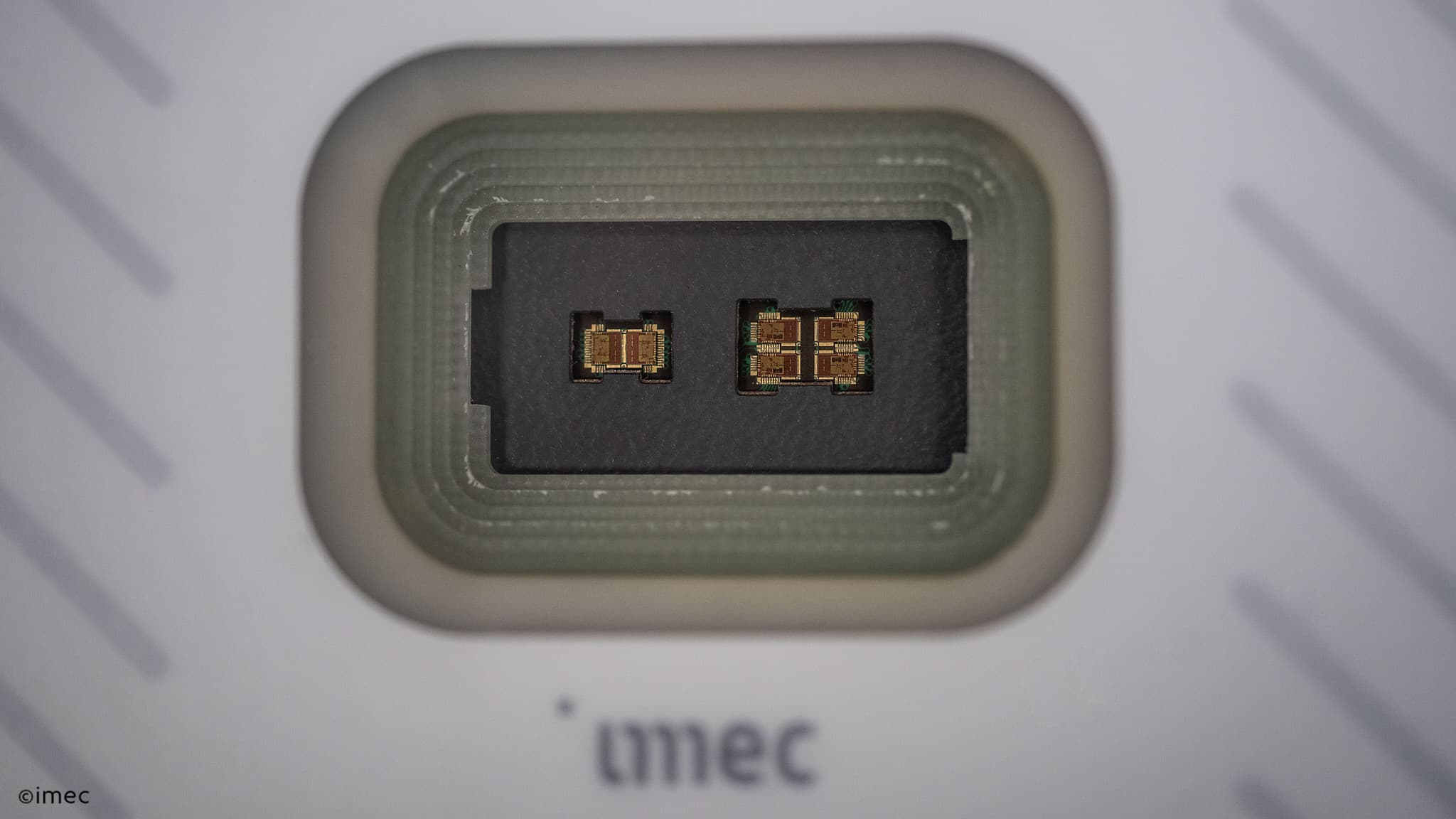
Imec’s 140 GHz radar chip
Reliable connectivity for industrial networks
Automated yet flexible production lines are one of the hallmarks of Industry 4.0. To avoid constant reconfigurations of cabling, this calls for wireless networks in at least part of the infrastructure.
Because of high bandwidth and low latency, (beyond) 5G technology is excellently suited for this purpose. What’s more, it’s able to dynamically support users’ quality of service (QoS) requirements – on demand and in real-time. This takes traffic prioritization to the next level, ensuring an optimal user experience without overloading the network.
Read the article: the real promise of 5G lies in on-demand QoS
One of the biggest challenges lies in ensuring that these mixed of wireless and wired setups offer the same reliability as wired networks. To this end, imec is working on software strategies for deterministic networking.
GaN – compact, reliable powering
One type of specialty components that is of interest for Industry 4.0, is GaN power electronics. For instance, GaN devices allow the creation of dedicated power supplies, converters, and charging systems that are more compact, reliable, high-performing, and cost-effective than any other technology.
They can power motor drives that reduce energy loss, increase power density, and double motor lifetimes. Or drive robots with a higher precision, flexibility, dexterity and speed.
Realize your ASIC for advanced robotics
As a producer of high-quality applications, you prefer to have your ASICs made in a leading foundry, using advanced technology and stable processes. But if you are a start-up company, design ASICs for a niche market, or don’t need high-volume production, it’s near impossible to get direct access to these foundries.
That’s where IC-Link comes in. Imec's ASIC division offers flexible access to prototype and production capacity at leading foundries. And complements this with high-quality support, design services, and packaging & test services.
Developing your Industry 4.0 solution with imec as a partner
Imec has a wealth of technologies available, from easy-to-integrate IP to early concepts. But we also have the expertise to accompany you from product idea to the design and fabrication of smart electronics.
If you choose imec as your preferred R&D partner, you get access to a network of experts, proven technology, disruptive concepts, valuable IP, partnerships, and prototyping and testing facilities.
Here are a few of the many collaboration options:
- Reach out to us to develop, prototype or manufacture your MEMS or silicon microdevices.
- Join our Pixel R&D program where we bring together the entire value chain to develop technologies for companies with a roadmap in innovative image sensors, cameras and smart imaging applications
- Agree with us on a bilateral collaboration to R&D your custom solution, or any part of it.
- Reach out to IC-Link for custom ASIC manufacturing with leading foundry technologies.
Click the button below to get in touch.



